Turning Sperm On and Communication through Tennis
We discover how sperm get turned on, how researchers can recreate colourful dinosaurs and how painstaking genetic studies help us to understand how mosquitoes smell the world. Plus, sound sleep for type 1 diabetics and how thinking about tennis can help us to communicate with people in persistant vegitative states.
In this episode
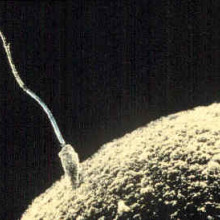
00:16 - How sperm get turned on
How sperm get turned on
Scientists have discovered the mechanism that starts sperm swimming once they exit the male...
Most people regard sperm as tiny swimming cells that vigorously dash about in search of eggs. But, in reality, they only begin behaving like this once they enter a female. In the male they remain quiescent so as not to wear themselves out before the "great egg race". How this was achieved though, no one knew.
Now researchers at the University of California San Francisco have found that an ion channel (a specialised pore) in the cell membrane allows protons - hydrogen ions - to flood out of the sperm at the right moment, and this is the trigger that starts them swimming.
Polina Lishko and her colleagues made the discovery using a technique called "patch clamping". A tiny pipette was applied to the membranes of individual sperm cells to measure the electrical currents flowing into and out of the cells under different conditions.
The work, published in the journal Cell, showed that, in response to alkaline conditions, a drop in zinc concentration, or the presence of one of the body's own cannabis-like chemicals - a substance called anandamide - the ion channel - called Hv1 - opened. The exit of hydrogen ions through the channel raises the pH inside the sperm, activating other metabolic processes including switching on the sperm flagellum, which it uses to swim.
The discovery sheds new light on an old mystery but may also hold the key to treatments for some forms of infertility and even the next generation of contraceptives: by blocking the proton pore with a drug scientists are hoping they can switch off sperm to induce a state of reversible infertility; it may also be possible to give the motility of sperm a boost in people with poor sperm function.
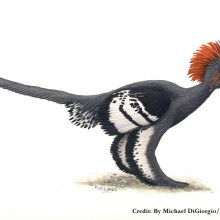
The markings of a dinosaur mapped out
By comparing tiny pigment particles between modern-day birds and fossils, researchers have rediscovered the colours of a dinosaur that existed 150 million years ago. And they weren't just ginger.
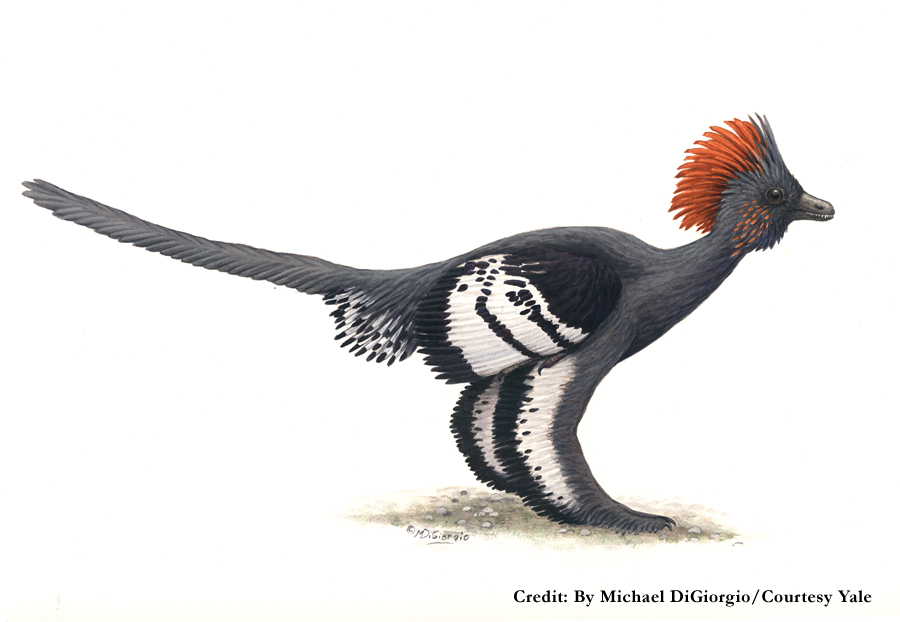 Reporting in the journal Science, the latest team, led by Yale University, follow beautifully from last week's news of the flame-haired, feathered Sinosauropteryx.
Reporting in the journal Science, the latest team, led by Yale University, follow beautifully from last week's news of the flame-haired, feathered Sinosauropteryx.
This latest study analysed colour-making structures called melanosomes from the whole fossil of a single dinosaur and managed to map out a great deal of the pattern of its markings.
The dinosaur in question was Anchiornis huxleyi which had wings and a Mohawk-like crest on its head. From their reconstruction the palaeontologists think it would have had a grey body, its crest would have been reddish-brown, it had facial speckles (or freckles) and white feathers on its wings and legs, with black stripes.
They way they did this was rather ingenious. Jakob Vinther (also from Yale) was studying the ink sac of an ancient squid and realized that microscopic, grainy features within the fossil were actually melanosomes - and these contain melanin, which provides pigment in animals. But previously some scientists had thought these granules were just some rather unexciting ancient bacteria. Not anymore.
The team looked at 29 feather samples from the fossil and they measured and mapped out these melanosomes. They then compared these with the types of melanosomes known to create particular colours in living birds, using data compiled by a group at the University of Akron. The analysis allowed them to say with about 90 percent certainty that these are the colours of individual feathers.
The finding hints that, as these dinosaurs were flightless, colourful feathers may have arisen for aesthetics and attracting mates.
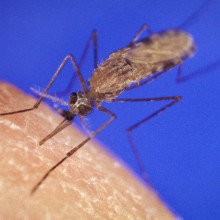
05:25 - What do mosquitoes smell?
What do mosquitoes smell?
Scientists have discovered the specific odour receptors used by the malaria-spreading mosquito species Anopheles gambiae to hunt down humans.
A paper in this week's Nature sets out an ingenious strategy 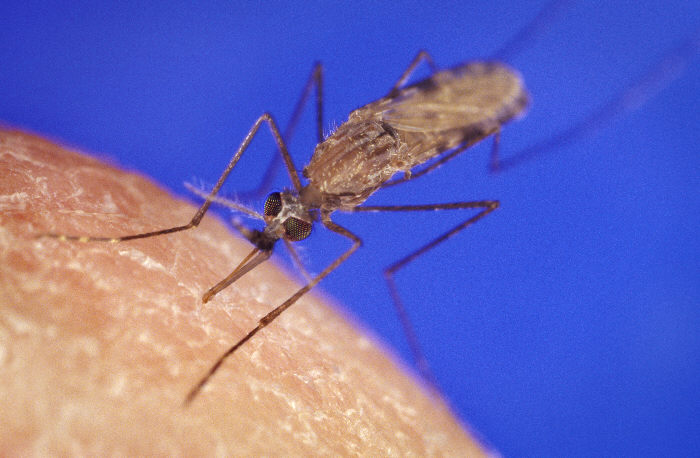 whereby a US-based team tested, one at a time, each of the 70-plus genes that encode mosquito odourant detectors in order to work out what chemicals each receptor could pick up.
whereby a US-based team tested, one at a time, each of the 70-plus genes that encode mosquito odourant detectors in order to work out what chemicals each receptor could pick up.
Yale researcher Allison Carey and her colleagues painstakingly inserted each gene in turn into a family of mutant fruit flies with a defective sense of smell. In these flies, known as the "drosophila empty neuron system", one of the nerves in their antennae lacks any of the olfactory receptors that are needed to detect odours.
Consequently, adding a mosquito receptor gene to this class of nerve endows the antennae of the recipient flies with the mosquito receptor, sensitising their antennae to any chemicals to which that receptor responded. And by studying just one gene at a time, the full spectrum of odours detected by that receptor could be identified.
To find out what odourants each responded to, the team recorded the electrical activity from the modified flies' antennae as they were exposed to more than 100 different consecutive smells, including chemicals known to be produced by humans and the bacteria that live on human skin.
The result was the discovery of 27 olfactory receptors that responded particularly strongly to components of human sweat.
Now, having mapped the "smell spectrum" detected by Anopheles mosquitoes and determined which receptors play the most important role in enabling the insects to home in on humans, the researchers are turning their attention to finding more effective repellents and trap-attractants.
"We're now screening for compounds that interact with these receptors," says co-author John Carlson. "Compounds that jam these receptors could impair the ability of mosquitoes to find us. Compounds that excite these receptors could help to lure mosquitoes into traps or repel them. The best lures or repellents may be cocktails of multiple compounds."
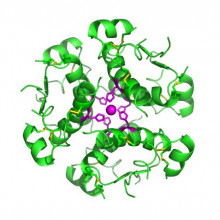
Computer Controls Blood Sugar
Researchers at the University of Cambridge have put together an artificial pancreas system which works overnight and considerably reduces the risk of low blood sugar occurring in diabetics during sleep.
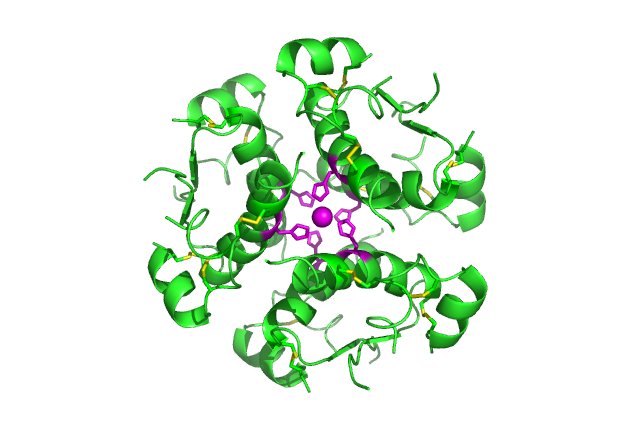 In people with type 1 diabetes the pancreas doesn't produce enough of the hormone insulin and it's this hormone which enables muscles and the liver to take up sugar from the blood. This can be a huge problem at night when these low sugar levels - or hypoglycaemic events - can go unnoticed and can lead to seizures or even comas.
In people with type 1 diabetes the pancreas doesn't produce enough of the hormone insulin and it's this hormone which enables muscles and the liver to take up sugar from the blood. This can be a huge problem at night when these low sugar levels - or hypoglycaemic events - can go unnoticed and can lead to seizures or even comas.
Publishing this week in the Lancet, the Cambridge team put together some commercially available kit which can monitor and deliver insulin but they added their own computer algorithm to work out how much insulin was necessary.
They trialled this on 17 youthful people aged between 5 and 18 years who had type 1 diabetes. Type 1 diabetics can use an artificial pump during the night which feeds the body with insulin. The problem with that is that it makes no account for the sugar level at the time - it's just a steady stream of insulin. And with that method the team found that the blood sugar level stayed in the correct range for about 40% of the time.
But using their new set-up where they adjusted the insulin to each blood sugar measurement, the resulting blood sugar level was right between 60% and 75% of the time.
Roman Hovorka, who's from the Institute of Metabolic Science at the University of Cambridge, said: "These results suggest that closed-loop devices may be able to significantly lower the patient's risk of developing complications later in life by reducing or even overcoming the burden of hypoglycemia."










Comments
Add a comment